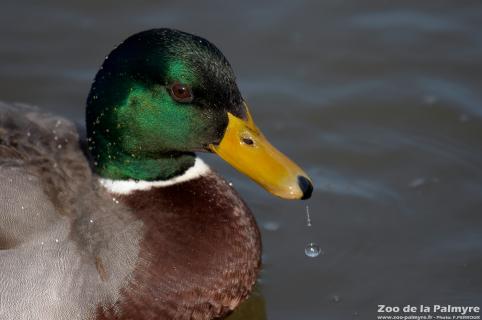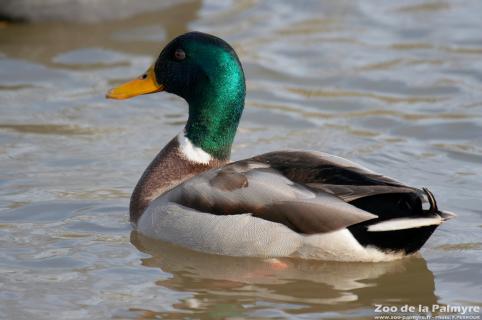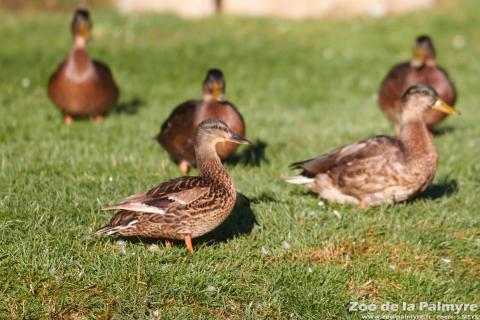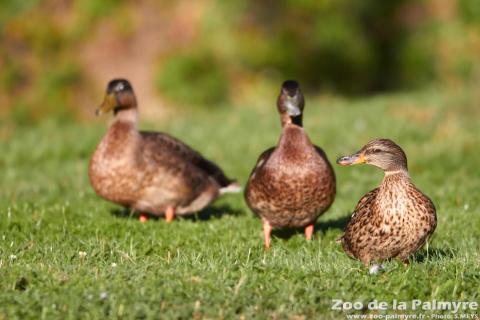Mallard

Mallard

-
Class
Aves -
Order
Anseriformes -
Familly
Anatidae
-
 40-50cm
40-50cm -
 0.8-1kg
0.8-1kg -
 28 days
28 days -
 10-12
10-12 -
 up to 25 years in zoos
up to 25 years in zoos
-
Diet
omnivorous (insects, worms, grains, plants) -
Habitat
wetlands -
Range
mainly the Northern Hemisphere (Europe, China, North Africa, North America) -
Population in the wild
En augmentation -
IUCN REDLIST status

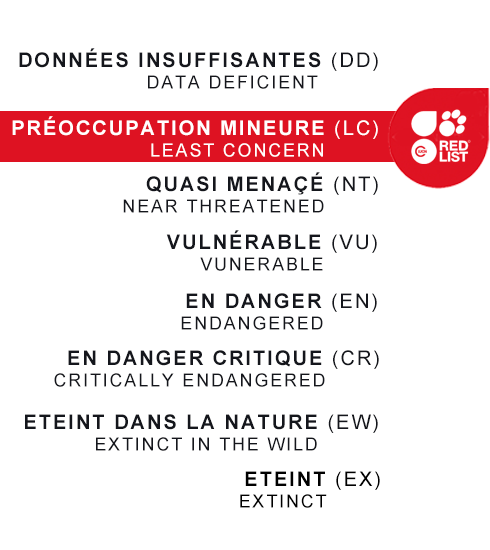
Mallards moult twice a year: in early spring for the breeding season, and in late summer. At these times, they lose their feathers and are unable to fly. The male, whose coat becomes duller during moulting, gets his colours back during the breeding season where it dons a bright green plumage on its head and neck. The female, whose coat is less conspicuous, chooses the location of the nest and incubates the eggs alone. The chicks are nidifugous, meaning that they go to the water a few hours after they hatch and are able to feed alone. They will fly at around 7 to 8 weeks old.
Wild Mallards’ life expectancy is very low due to hunting. Humans are their greatest predator.
Mallards are the largest and the most common ‘dabbling ducks’ – that's to say those that don’t plunge deep below the surface of the water like ‘diving ducks’ do.

